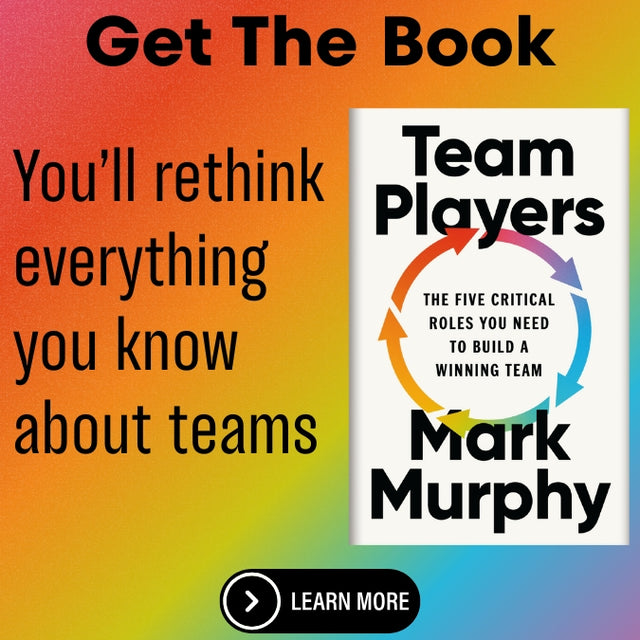Foster Teamwork: Evidence-Based Strategies
Foster Teamwork: Evidence‑Based Strategies for Business Leaders and HR Professionals
Teamwork is widely celebrated as a cornerstone of organizational success, but building and maintaining effective teams is far more complex than simply putting talented people together. Fostering teamwork requires deliberate strategies that blend psychological safety, shared purpose and trust with clear goals, inclusive communication and recognition. This report synthesizes peer‑reviewed research and contemporary statistics to help business leaders and HR professionals create high‑performing, collaborative teams. To discover your own collaborative style, take our team player quiz and see what type of team player you are.
Understanding Teamwork
What is teamwork?
Teamwork is more than simply working in proximity; it is a coordinated effort where individuals share a common goal, complementary skills and mutual accountability. Interdisciplinary research defines a team as a group that shares goals, resources and accountability for results. Teams differ from working groups because the outputs emerge from collective interactions rather than aggregated individual work. In scientific collaboration, for example, successful teams meet regularly, define a vision, communicate effectively and encourage intellectual disagreement while maintaining high trust[1]. These characteristics translate to business settings where cross‑functional teams collaborate to innovate, solve complex problems or deliver projects.
Foster collaboration meaning and definition
The terms foster collaboration and foster teamwork involve creating conditions that encourage individuals to share knowledge, ideas and resources. While these concepts are related, understanding collaboration vs teamwork helps clarify the distinctions between joint effort and coordinated group work. Collaboration means joint work toward shared goals and requires openness, trust and constructive disagreement. According to NIH researchers, supporting features such as trust, shared vision, purposeful team composition and clear expectations for sharing credit prevent teams from derailing[2]. In short, fostering collaboration refers to deliberately building these conditions to enable teams to perform collectively at a higher level than members could achieve alone. Fostering cooperation extends this concept to any group or partnership, emphasizing that trust and explicit agreements about roles and decision‑making are scaffolding for productive cooperation[3].
Collaboration is distinct from simple coordination or cooperation. Recent cross‑cultural research emphasizes that collaboration involves joint deliberation, shared decision‑making and collective action rather than merely working side by side[4]. The World Journal of Advanced Research and Reviews notes that the term originates from the Latin collaborare ("to labor together") and is conceptualized as a process of deliberating together, authorizing actions on behalf of the group and synthesizing diverse inputs into unified solutions[5]. Stapleton describes collaboration as a joint intellectual effort—even, metaphorically, "working with the enemy" to achieve a common good[6]. These definitions highlight that fostering collaboration requires cognitive and emotional investment, mutual respect and inclusive decision processes. Leaders cannot rely on structural proximity alone; instead, they must nurture relationships and processes that transform individual contributions into collective intelligence[7].

The Importance of Teamwork in the Workplace
Benefits of fostering teamwork
Research consistently demonstrates that effective teamwork improves organizational performance. Understanding the advantages and disadvantages of teamwork helps leaders maximize benefits while mitigating potential drawbacks. A 2024 report on collaboration found that high‑performing teams are up to 25% more productive than less collaborative groups[8]. Collaboration leverages diverse skills and perspectives, leading to faster problem solving and reduced time spent searching for information[9]. Meta‑analyses also show that highly engaged teams are 21% more productive[10] and that allocating tasks based on individuals' strengths enhances both individual and team performance[11].
Beyond productivity, collaboration fosters innovation. A study of psychological safety in high‑tech enterprises found that three dimensions of team psychological safety—team collaboration and understanding, information sharing and give‑and‑take balance—significantly improve employees' innovative performance[12]. Communication behavior mediates this relationship, meaning that safe environments encourage members to communicate openly, which in turn stimulates innovation[12]. Teams that practice inclusive decision‑making benefit from broader information and diverse perspectives; one study reported that diverse teams outperform individuals 87% of the time when making business decisions[13].
Teamwork also drives employee engagement, satisfaction and retention. A Statista‑reported survey found that 89% of workers believe interdepartmental teamwork is important or very important to their overall job satisfaction[14]. Gusto's study on small‑business employees revealed that 37% cite "working with a great team" as their primary reason for staying with their employer[15]. Collaborative cultures improve focus and stamina; in a Stanford experiment, participants who perceived themselves as working collaboratively focused on tasks 64% longer and experienced lower fatigue than those working alone[16]. At an organizational level, businesses that actively promote collaboration are five times more likely to be classified as high‑performing[17]. Conversely, 86% of respondents in a Fierce Inc. survey blamed workplace failures on lack of collaboration or ineffective communication, and 97% believed poor alignment within a team impacts task outcomes[18]. These statistics underscore that fostering teamwork is not just a feel‑good initiative but a critical lever for satisfaction, retention and success.
How teamwork impacts productivity
Strong teams not only work faster but also produce higher‑quality outcomes. Collaboration improves role clarity, which increases efficiency by 53% and effectiveness by 27%[19]. Online collaboration tools can raise productivity by 30%[20], though employees report challenges with technology adoption[21]. Recognition of team achievements has tangible financial impacts; acknowledging quality work increases profits by 29%, boosts sales by 19% and raises customer engagement by 7%[22]. Conversely, poor collaboration dampens morale—33% of HR professionals report that weak collaboration reduces morale[23], and nearly 40% of employees cite insufficient collaboration at their organization[24].
Recent statistics provide deeper insight into how teamwork influences productivity and well‑being. Matrixed work arrangements—where employees belong to multiple teams—are now the norm, with 84% of U.S. employees reporting they work across multiple teams or under different managers[25]. In such contexts, cross‑team collaboration becomes even more essential. Gallup found that three‑quarters of employers rate teamwork as "very important," yet 39% of employees feel that people in their organization do not collaborate enough[26]. Communication quality is another driver of performance: 80% of workers report feeling stressed due to poor communication from their employer[27], only 31% believe their leaders communicate well[28], and 46% say they regularly receive unclear requests, spending about 40 minutes a day clarifying them[29].
Importantly, not all collaboration is equal. Research has found gendered patterns in collaboration; men are 36% more likely to provide informational support while women are 66% more likely to assist others[30]. Bias can influence how contributions are perceived—for example, colleagues rated a man working overtime 14% higher than a woman doing the same task and penalized the woman 12% more when neither helped[31]. Awareness of such biases enables leaders to design fair recognition and workload distribution systems.
Finally, long‑standing research by LaFasto and Larson identifies five dynamics of teamwork—team members, relationships, collaborative problem solving, good leadership and supportive organizational context—that underpin high performance[32]. High‑performing teams excel across these dimensions: they select members with complementary skills, cultivate strong interpersonal relationships, engage in structured problem solving, are guided by effective leaders and operate within organizations that value collaboration. For HR professionals, addressing these dynamics holistically can translate teamwork into sustained productivity and innovation.
Set Clear Goals
Establishing team objectives
Effective teamwork begins with clarity of purpose. Studies show that only 14% of managers feel confident that employees understand the company's strategy, goals and direction[33]. Without clear objectives, teams drift and collaboration suffers. Establishing team objectives involves collaboratively defining outcomes, responsibilities and success metrics—often through effective team meetings where goals are discussed and aligned. These objectives should align with organizational strategy and be communicated across the team. According to NIH research, successful collaborative teams start by developing common objectives and coordinating resources around a shared agenda[34]. Leaders should articulate both immediate milestones and long‑term goals, ensuring they are specific, measurable and tied to broader organizational aims.
Goal‑setting frameworks can help structure this process. SMART goals—Specific, Measurable, Achievable, Relevant and Time‑bound—provide clarity and accountability by translating broad aspirations into concrete targets. Objectives and Key Results (OKRs) pair ambitious qualitative objectives with quantitative key results, fostering alignment across levels: teams set objectives that roll up to strategic themes and define key results that measure progress. Balanced scorecards extend goal setting beyond financial outcomes to include customer satisfaction, internal processes and learning and growth. When teams co‑create goals using these frameworks, they develop shared ownership, improved clarity about priorities and a basis for tracking progress.
Aligning individual goals with team goals
Aligning individual aspirations with team objectives is essential for engagement and requires cultivating a teamwork mindset throughout the organization. Team members often ask "What's in it for me?" when joining a team; aligning goals ensures the work supports individual career needs[35]. Managers can facilitate alignment by co‑creating personal development plans that link individual strengths and career aspirations to team outcomes. Strengths‑based allocation of tasks not only boosts individual performance but also benefits team productivity[11]. When employees see how their contributions advance both personal and team goals, they are more likely to invest discretionary effort and sustain collaboration.
In practice, aligning goals requires understanding individual motivations and constraints. Millennials, Gen Xers and Baby Boomers often differ in how they prefer to work and be recognized[36]; for example, younger employees may value flexible schedules and development opportunities, whereas more experienced colleagues may prioritize autonomy and stability. Remote and hybrid work arrangements add further complexity—employees juggling multiple teams need clarity on how their contributions fit into each project's objectives[25]. Regular one‑on‑one discussions can surface career aspirations, workload concerns and developmental needs. Mapping these insights against team objectives enables managers to adjust tasks, provide targeted training and ensure that personal growth is not sacrificed for collective success.
Foster Open Communication
Encouraging dialogue among team members
Open communication is a foundational pillar of effective teamwork. Research on psychological safety shows that team members who feel safe to take risks are more willing to share ideas and ask questions[37]. Communication fosters trust and encourages team members to speak up about concerns or innovative ideas. In scientific collaborations, explicit statements about expectations for sharing data, making decisions and resolving disagreements help build calculus‑based trust[3]. Similarly, trust‑building sessions in human services teams created safe spaces where members could explore relationships, have reflective conversations and accelerate empathy[38]. Participants noted that these sessions made it easier to ask for help and talk openly[39].
To encourage dialogue, leaders can adopt several strategies:
- Establish psychological safety. Encourage candid feedback by inviting questions, acknowledging uncertainties and rewarding contributions. The PLoS study found that psychological safety dimensions—collaboration and understanding, information sharing and give‑and‑take—positively influence innovation[12].
- Model active listening. Ask clarifying questions, paraphrase understanding and respond non‑defensively. Panelists at a 2024 NIH seminar noted that giving everyone a voice (75% of attendees) and practicing active listening (60%) were top ways to foster inclusive teamwork[40].
- Use structured communication tools. Team collaboration platforms, regular check‑ins and feedback loops ensure information flows smoothly. Although 83% of employees use technology for collaboration, 59% find these tools challenging[21]; training and tool selection should address ease of use.
- Encourage peer relationships. Frequent interaction reduces uncertainty; according to the Uncertainty Reduction Theory, communication is the primary vehicle for building relationships[41]. Collaboration promotes mutual respect and belonging, leading to stronger peer relationships[42].
Open dialogue requires addressing the factors that stifle communication. Surveys show that 80% of workers feel stressed because employers communicate poorly[27], and only 31% believe their leaders communicate well[28]. A sizable 46% of employees frequently receive confusing requests and spend time clarifying them[29]. Moreover, 90% of workers think decision‑makers should seek employee opinions before making decisions, yet 40% say leaders fail to do so[43]. These statistics suggest that employees desire not just more communication but more authentic, participatory and clear communication. Salesforce research supports this, with 75% of workers preferring to speak with colleagues as they would with friends[44].
Leaders should also be sensitive to gender and cultural dynamics in dialogue. Studies reveal that men are more likely to provide informational support and women more likely to assist colleagues[30], and that biases can undervalue women's contributions[31]. Inclusive facilitation techniques—such as rotating speaking order, acknowledging contributions equitably and using anonymous idea submission tools—can mitigate these biases. Cross‑cultural teams may require additional intentionality around language, humor and context; explaining norms and inviting clarification reduces misunderstandings and helps members from diverse backgrounds feel comfortable voicing ideas.
Tools for enhancing communication
Digital collaboration platforms such as Slack, Microsoft Teams, ProofHub and Trello enable real‑time messaging, file sharing and project management. Online collaboration tools can increase productivity by 30%[21] and facilitate knowledge sharing 5× more effectively[45]. However, technology alone is insufficient; training, guidelines on response times and etiquette, and clear protocols for information sharing enhance tool effectiveness. For ideas on strengthening interpersonal connections alongside digital tools, explore our guide to communication team building activities. Leaders must also be mindful of generational preferences; while 49% of millennials, 31% of Baby Boomers and 40% of Gen X employees enjoy using social tools[36], others may prefer traditional channels. Hybrid communication strategies—combining asynchronous updates, synchronous meetings and face‑to‑face interactions—can accommodate diverse preferences and ensure everyone is informed.
With remote and hybrid work now commonplace—five in ten U.S. employees work remote‑capable jobs[46]—digital tools are essential infrastructure. Gartner reports a 44% increase in the use of online collaboration tools since 2019[47], and nearly 48% of businesses planned to increase their budgets for collaboration software in 2021[48]. These investments pay off by reducing turnover and improving well‑being[49]. HR leaders should evaluate tools on criteria such as ease of use, integration with existing systems, security and accessibility. Training programs should address digital etiquette (e.g., when to use chat vs. email, how quickly to respond) and help less tech‑savvy employees adapt.

Build Trust Among Team Members
Activities to promote trust
Trust is a necessary, though not sufficient, condition for effective teamwork[50]. In high‑performing research teams, trust prevents deterioration of team dynamics[2] and allows members to share data and credit openly[1]. To cultivate trust, leaders can implement various group activities designed to strengthen interpersonal bonds:
- Explicit agreements. Teams should negotiate and document expectations regarding data sharing, roles, decision‑making and conflict resolution[51]. Such scaffolding supports calculus‑based trust, where members rely on adherence to agreed rules[3].
- Trust‑building workshops. Structured sessions that combine emotional storytelling, empathy exercises and reflective dialogues build identity‑based trust. In a human services study, trust‑building sessions evoked positive emotions and created a safe learning environment where members could explore relationships and perspectives[38]. Participants reported that these sessions increased their willingness to rely on colleagues[39].
- Skillful leadership. Self‑aware leaders who understand their own communication style and conflict approach can foster trust by modeling vulnerability and fairness. According to NIH research, effective leaders purposefully build teams, promote disagreement while containing conflict and set shared expectations[2]. 360° assessments and personality tools like Myers‑Briggs or the Thomas–Kilmann conflict mode instrument can help leaders and team members understand differences and adapt[52].
- Consistent follow‑through. Trust grows when leaders and teammates keep promises, meet deadlines and provide support. In the trust‑building study, participants said follow‑through and creating space for team members to express needs were major trust builders[53].
Research on multicultural teams extends these strategies. Building trust requires time and intentionality; CIPD reports that it can take three to six months to develop a baseline level of trust among new team members[54]. In cross‑cultural settings, researchers recommend meaningful conversations, kick‑off meetings to emphasize team composition and shared interests, and ensuring that all members have access to comparable technology so no one feels disadvantaged[55]. Giving everyone the scope to speak, clarifying tasks, turning cameras on during virtual meetings and maintaining informal contact all contribute to trust[56]. Additional techniques include:
- Telling the truth and showing respect. Speak straight, disclose mistakes and apologize when needed[57].
- Practicing transparency. Share necessary information and fix wrong matters proactively[57].
- Giving credit and seeking feedback. Show loyalty, ask for input and make improvements based on it[58].
- Keeping commitments. Demonstrate dependability and follow through[59].
- Prioritizing listening. Focus on understanding others before preparing a response[60].
Altwaian's research points to qualities such as honesty, reciprocity, reliability, support and shared understanding as essential for trust[61]. Other scholars emphasize supporting personal and professional growth, promoting emotional intelligence, facilitating cross‑level decision‑making and maintaining consistency in behaviors as additional trust‑building measures[62]. Collectively, these practices remind leaders that trust is built through actions, not words—and must be nurtured continuously, especially in multicultural environments where misinterpretations can quickly undermine relationships.
Importance of trust in fostering teamwork
Trust influences cohesion, communication and performance. At a basic level, collaboration requires relinquishing some control and vulnerability[63]. Without trust, this vulnerability leads to defensive behavior, hindering cooperation[64]. Researchers distinguish three types of trust:
- Identity‑based trust – personal relationships where parties understand each other's values and can act for one another[65].
- Calculus‑based trust – confidence that partners will keep promises and fulfill expectations[66].
- Competence‑based trust – belief in another's skills and abilities[67].
These forms of trust collectively support team functioning. A breakdown in any type can erode overall trust, making collaboration difficult[68]. Trust also enhances innovation; psychological safety research shows that environments with high trust encourage members to propose new ideas and learn from failures[69]. In the human services study, trust fostered open communication and made implementation easier[39]. Team members felt more comfortable sharing vulnerabilities and asking for help when trust existed[70].
Scholars further expand the taxonomy of trust. Personality‑based trust is inherent and arises from consistent traits; cognitive trust is grounded in a belief in someone's competence; affective trust flows from care and concern; conative trust stems from consistent actions and intentions; swift trust develops quickly in temporary or virtual teams and centers on knowledge sharing; and institutional trust relies on organizations' norms and sanctions to ensure compliance[71]. In multicultural or virtual teams where members may never meet physically, swift and institutional trust become particularly relevant—members rely on shared norms and technology to coordinate without robust personal relationships.
Building and maintaining trust yields numerous benefits. In cross‑cultural research, trust makes collaboration easier, increases productivity, reduces risks and organizational costs, improves uncertainty tolerance and enhances belonging[72]. Collaboration built on trust also increases the acceptance of alternative solutions and strengthens performance and functionality[73]. These outcomes underscore why fostering trust is central to fostering teamwork: trust enables vulnerability, honest feedback, shared decision‑making and the resilience needed to navigate complex, interdependent work.
Embrace Diversity
Fostering collaboration through varied perspectives
Diversity in teams goes beyond demographic representation; it encompasses different work styles, experiences, skills and perspectives. Research indicates that diverse teams make better decisions and produce more innovative solutions than homogeneous groups. A University of North Carolina study found that diverse teams outperform individuals 87% of the time during decision‑making[13]. The World Journal of Advanced Research and Reviews reports that collaborative teams generate more innovative solutions than those working alone, as diverse viewpoints uncover blind spots and inspire creative problem solving[74]. McKinsey & Company's research concludes that high‑performing teams are more productive—up to 25%—partly because they leverage diversity[8].
Embracing diversity also helps empower low‑power employees, particularly those from under‑represented groups. People with less status or authority are more likely to voice ideas when their teams have varied perspectives, as diversity signals that multiple viewpoints are valued. A 2023 Slack survey found that feeling happy and engaged—the result of inclusive environments—was the key driver of productivity for 82% of respondents[75]. Inclusive teams also foster psychological safety, which encourages risk‑taking and innovation[37].
Multicultural teams are defined as groups with at least one member who is geographically or culturally different from the others[76]. Such teams provide numerous advantages: they bring a wide range of perspectives, generate better ideas, practice diverse meanings, visualize problems more broadly and offer more alternative solutions[77]. However, multicultural teams also face challenges, including feelings of isolation, misunderstandings, mistrust, miscommunication and conflict[78]. Leaders must therefore balance diversity's benefits with deliberate management. Research suggests that establishing trust within multicultural teams can take three to six months[54], underscoring the need for patience and structured support. Proactive strategies—such as recognizing cultural differences, providing language support, clarifying norms, hosting social interactions and openly discussing conflict—help unlock the creative potential of diversity while mitigating the risks[55].
Understanding different work styles
Leaders must recognize and integrate different work styles, personality preferences and cultural norms. Tools like the Myers‑Briggs Type Indicator or Gallup's CliftonStrengths help teams understand individual preferences[52]. Awareness of these differences reduces misinterpretations and conflict, promoting tolerance and appreciation. Building teams with complementary skills and attitudes enhances performance; research from Tilburg University shows that allocating tasks based on individual strengths fosters individual and team performance[11]. Team composition should also consider career stages and motivations—what motivates a mid‑career professional may differ from a recent graduate[79].
Multicultural research highlights that work styles and communication preferences vary widely across cultures. Some cultures value directness and speed, while others favor harmony and contemplation; some individuals work best autonomously while others thrive through collective brainstorming. The WJARR review suggests that leaders should familiarize themselves with each member's working style, invite discussion about differences and appreciate each viewpoint[80]. Investing time to discuss differences openly—including uncomfortable topics like financial expectations—builds personal and professional relationships that support collaboration[81]. Encouraging empathy, balancing workloads, educating about shared realities and promoting psychological safety are additional techniques recommended for multicultural teams[82]. By accommodating varied work styles and creating a flexible environment, leaders can harness diversity as a strength rather than a barrier.
Recognize and Celebrate Achievements
Ways to acknowledge team efforts
Recognition reinforces positive behaviors and aligns individuals around shared goals. Evidence suggests that recognizing achievements increases profits by 29%, boosts sales by 19%, and raises customer engagement by 7%[22]. Celebrating milestones can take many forms:
- Public acknowledgements. Announce achievements during meetings, newsletters or digital channels.
- Peer‑to‑peer recognition. Encourage colleagues to praise each other. Peer recognition has been linked to higher engagement and morale[42].
- Personal rewards. Provide personalized tokens of appreciation such as gift cards, extra time off or professional development opportunities.
- Milestone celebrations. Celebrate project completions or innovation successes with team lunches or virtual gatherings.
Beyond extrinsic rewards, recognition should emphasize intrinsic motivators like mastery, autonomy and purpose. Leaders can highlight how each team member's work advances the organization's mission, thereby building meaning and ownership.
Effective recognition is equitable, frequent and personalized, and plays a key role in building a strong teamwork culture. In one survey, 37% of employees cited "working with a great team" as their primary reason for staying[15]—a testament to the power of social recognition. Recognition programs should account for diverse preferences; some people appreciate public praise while others prefer a private thank‑you. To avoid bias, managers can solicit peer nominations and rotate recognition across roles and genders. The WJARR review emphasizes that giving credit and showing loyalty are integral to building trust[83]; publicly acknowledging contributions demonstrates respect and reinforces collaborative norms.
Impact of recognition on morale
Recognition is a powerful lever for morale. Teams that feel valued experience greater commitment, lower turnover and higher job satisfaction[8]. Conversely, when managers fail to recognize contributions, morale suffers—nearly 27% of employees leave because they don't feel connected to their organization[84]. Recognition also fosters trust and belonging; in the trust‑building study, participants noted that being able to voice needs and see them addressed strengthened trust[53]. Therefore, recognition should be consistent, specific and inclusive to maximize its positive effect on teamwork.
Recognition can also mitigate stress from poor communication and misalignment. Surveys show that 80% of workers feel stressed by inadequate communication[27]; timely recognition of contributions can offset some of this strain by signaling that managers are paying attention. Similarly, 86% of professionals blame project failures on lack of collaboration[18]; celebrating collaborative achievements counters this narrative and reinforces the benefits of teamwork. By weaving recognition into regular feedback loops, leaders can anchor morale and encourage continued cooperation.

Encourage Collaboration
Strategies for fostering cooperation
Creating a collaborative environment involves both cultural and structural elements. Here are evidence‑based strategies:
- Shared vision and purpose. Teams need a shared purpose to align efforts. Scientific teams with a clear vision meet regularly, define goals and encourage intellectual disagreement[1]. Leaders should co‑create a vision statement that resonates with all members.
- Role clarity and autonomy. Collaboration thrives when individuals understand their responsibilities. Employees with role clarity are 53% more efficient and 27% more effective[19]. At the same time, autonomy allows members to use their strengths and fosters engagement[11].
- Inclusive decision‑making. Involve team members in decisions to leverage diverse perspectives. Diverse teams beat individual decision‑makers 87% of the time[13]. Collaborative decision‑making improves information quality and reduces bias[85]. However, leaders must be vigilant about decision-making pitfalls such as the herding effect, where group behavior can unduly influence individual choices.
- Regular feedback loops. Create mechanisms for continuous feedback and reflection. The NIH article suggests that self‑ and team‑awareness is critical for integrating new habits[86]. Establish weekly or bi‑weekly retrospectives to discuss what works and what needs adjustment.
- Encourage social interactions. Informal socializing improves communication and strengthens relationships. Studies show that 50% of positive changes in communication are attributed to employees socializing outside the workspace[87].
- Leverage technology wisely. Use collaboration tools to manage projects and communicate, but provide training and guidelines to avoid misuse. Recognize that technology adoption varies across age groups[36].
- Promote knowledge sharing. Companies with strong collaboration practices are 5× more likely to share knowledge effectively[45]. Encourage documentation, mentorship, peer instruction and cross‑training to democratize knowledge.
- Facilitate intercultural understanding. In multicultural teams, leaders should provide opportunities for members to discuss cultural norms, working styles and expectations[80]. Educating team members about shared realities, promoting diversity and creating psychological safety are central to effective collaboration[82].
- Address unconscious bias. Recognize that gender and cultural biases influence how contributions are perceived; design processes that ensure equitable participation and evaluation[88].
- Invest in relationship‑building. Encourage informal interactions and social activities; research shows that half of positive changes in communication result from employees socializing outside the office[87]. In multicultural teams, leaders should be sociable—remembering names, cultural events and personal milestones—to foster connections[89].
Creating a collaborative environment
Culture influences collaboration. Leaders must model collaborative behaviors such as transparency, vulnerability and mutual respect. They can nurture a sense of belonging by ensuring equitable participation, particularly for under‑represented voices. In 2024, attendees at an NIH seminar identified everyone having a voice (75%) and active listening (60%) as top practices for inclusive teamwork[40]. Managers should also monitor team size; research suggests the "dream team" size is 4.6 members, and larger teams risk miscommunication[90]. When teams become too large, consider breaking them into sub‑teams or working groups to maintain effective coordination.
To build a collaborative culture, organizations must align structures and incentives with collaborative values. McKinsey research highlights that teams aligned under a shared vision are 1.9 times more likely to deliver above‑median financial performance[91]. Additionally, diverse teams perform 12% better than non‑diverse ones[92], yet only 20% of executives believe their teams are high‑performing[93]—suggesting a gap between potential and reality. Encouraging decision makers to consult employees can close this gap; 90% of workers want to be consulted, but 40% say leaders fail to seek input[43]. A culture of consultation not only improves decisions but signals respect for employees' expertise, further motivating collaboration. Finally, invest in incentives for collaboration: people tend not to collaborate when there is no incentive to do so[94]. Rewards tied to team outcomes, rather than individual heroics, reinforce the shared identity that underpins sustained collaboration.
Provide Resources and Support
Equipping teams with the necessary tools
Resources fall into three categories: technology, training and organizational support. Providing up‑to‑date collaboration tools (chat platforms, project management software, shared drives) empowers teams to coordinate effectively and share knowledge. However, with 59% of employees citing collaboration tools as challenging[21], offering training and technical support is essential. Organizations should also invest in team development workshops—trust‑building sessions improved implementation capability and motivation in human service teams[95]. Leadership development programs should emphasize communication, conflict management and inclusivity.
Physical resources matter too. Open spaces, comfortable meeting rooms and reliable video conferencing infrastructure signal that collaboration is valued. Funding for cross‑departmental projects can remove financial barriers to cooperation. For virtual teams, providing allowances for home office equipment and stable internet connections is critical.
The technological landscape for collaboration is rapidly evolving. With remote and hybrid work here to stay, adoption of collaboration tools is surging—usage has increased by 44% since 2019[47]. Employers are responding: nearly half plan to increase spending on collaboration software[48]. Tools alone, however, cannot ensure collaboration. Managers must create guidelines about which channels to use for different kinds of communication, set expectations for responsiveness and guard against digital overload. Provide training not just on how to click buttons but on how to communicate effectively in a digital environment. Beyond technology, organizational support should encompass mental health resources, ergonomic equipment and opportunities for connection. Supporting psychological well‑being is essential for collaboration, especially given the stress associated with poor communication and the blurred boundaries of remote work[27].
Importance of managerial support
Management plays a pivotal role in fostering teamwork. A TeamStage report shows that 70% of deviations in team engagement are attributable to managers[96]. Managers must provide clear goals, remove obstacles, advocate for team resources and model collaborative behavior. They should also communicate goals frequently—only 5.9% of organizations communicate goals daily[97], yet open communication increases productivity and retention[98]. Managers should encourage transparency about progress, problems and successes, and intervene when conflict escalates beyond productive disagreement. Finally, leaders must advocate for diversity and inclusion, ensuring that team members feel safe to contribute.[99]
Recent statistics emphasize the magnitude of managerial influence. Gallup reports that managerial performance accounts for 70% of the variance in employee engagement[100], and time managers spend on collaborative activities has increased by at least 50% over the past two decades[101]. Yet many managers still struggle to solicit employee input; 90% of workers wish leaders would seek their opinions, but 40% report that decision makers repeatedly fail to do so[43]. Managers can bridge this gap by hosting regular listening sessions, involving employees in strategy development and acknowledging contributions publicly. Moreover, managers should ensure that incentives encourage collaboration rather than competition and that performance reviews include metrics on teamwork. Continuous education on bias, coaching and conflict resolution will help managers create environments where teamwork thrives.
Continuous Improvement and Feedback
Creating a culture of feedback
High‑performing teams treat feedback as a continuous loop rather than an annual event. Open feedback supports learning, corrects course and fosters psychological safety. According to the NIH article, self‑awareness and self‑regulation help individuals focus on issues and avoid emotional reactivity[102]. Leaders can encourage feedback by scheduling regular check‑ins, adopting a coaching mindset and inviting upward feedback. 360° feedback tools provide insights from peers, subordinates and supervisors, promoting holistic development[52].
Feedback loops should also capture team‑level performance. Agile retrospectives and after‑action reviews help teams reflect on what went well and what could improve. Include metrics on collaboration frequency, decision cycle time and innovation outcomes. Recognize improvement achievements and adjust processes accordingly.
To build a true feedback culture, organizations must tackle communication barriers. When 80% of employees experience stress due to poor communication[27] and 17% would consider firing their CEO over communication practices[103], it is clear that current feedback mechanisms are insufficient. Only 18% of employees receive communication evaluations[104], highlighting a missed opportunity for coaching. Leaders should normalize upward feedback by requesting input on their own behaviors and modeling vulnerability. Facilitated sessions, anonymous surveys and peer coaching groups can complement formal evaluations. By making feedback a shared responsibility—where everyone is both giver and receiver—organizations foster accountability and continuous improvement.
How to promote teamwork through reflection
Reflection consolidates lessons learned and reinforces collaborative behaviors. Tuckman's four stages of team development—forming, storming, norming and performing—offer a useful framework[105]. During the forming stage, teams establish purpose and roles[106]. In the storming stage, they negotiate roles and manage conflicts; leaders must create an atmosphere where disagreement is valued and premature consensus is resisted[107]. Successfully navigating storming leads to norming, where trust and effectiveness develop[108]; eventually teams reach performing, operating seamlessly with a shared goal[109].
Reflection is especially important during the storming phase. Teams should revisit their shared vision, clarify expectations and refine conflict resolution processes[110]. Engaging in reflective discussions helps individuals develop empathy and understanding of different viewpoints. In the trust‑building study, participants reported that discussing empathy and vulnerability reduced guards and allowed authentic self‑expression[70]. Reflection exercises, such as "start‑stop‑continue" or debriefing after major decisions, encourage continuous improvement and support psychological safety.
Reflection should also address systemic and cultural factors. Multicultural teams benefit from pauses to explore how cultural differences influence communication and decision‑making[77]; such conversations surface hidden assumptions and reduce misinterpretations. Leaders can ask questions like: "Whose voices have we heard?" "How did we handle disagreement?" and "What biases might have shaped our conclusion?" Documenting lessons learned and revisiting them when new members join helps institutionalize learning. In remote and hybrid contexts, asynchronous reflection—such as shared journals or digital retrospectives—allows dispersed teams to contribute on their own schedule. By weaving structured reflection into the work rhythm, organizations embed learning and adaptability into their culture.
Common Challenges in Fostering Teamwork
Even the best‑designed teams encounter obstacles. Social loafing, where some members contribute less in group settings, can erode equity and frustrate high performers. Clear accountability, rotating roles and transparent workload tracking counteract this tendency. Groupthink is another danger—teams may converge on consensus too quickly, suppressing dissenting views and missing creative solutions. A related phenomenon is the Abilene Paradox, where team members collectively agree to a course of action that none of them individually wants because they mistakenly believe everyone else supports it. Encouraging constructive conflict and inviting outside perspectives can mitigate groupthink. Remote and hybrid arrangements introduce challenges around time‑zone differences, isolation and digital fatigue. Scheduling overlapping hours, using asynchronous tools and providing regular social interaction help maintain cohesion. Cultural misunderstandings—misinterpreting communication styles, humor or norms—can cause friction; proactive cultural briefings, inclusive facilitation and translation services are essential. Finally, technology overload can overwhelm employees; streamline tools and align them with specific purposes to avoid fragmentation.
Future Trends and Considerations
Looking ahead, several trends will shape how organizations foster teamwork. The rise of artificial intelligence and automation will offload routine tasks, allowing teams to focus on complex problem solving and creative collaboration. AI‑powered meeting assistants, sentiment analysis and real‑time translation can enhance communication across languages and time zones. Hybrid and distributed work models will persist, making digital collaboration literacy a core skill; organizations must invest in onboarding processes that build connection among remote new hires. Generational diversity will increase as more Gen Z employees enter the workforce, bringing different expectations around collaboration, technology use and purpose. Sustainability and social impact will become central to many organizations' missions; teams will need to collaborate not only internally but also across organizational boundaries with customers, suppliers and communities. Continuous learning and adaptability will underpin success; as research evolves, HR professionals should monitor emerging evidence on psychological safety, virtual teamwork and human‑AI collaboration to refine their practices.
Conclusion: Building Sustainable Collaborative Cultures
Fostering teamwork is both a science and an art. Academic research underscores that trust, psychological safety, shared goals and inclusive communication are critical drivers of team performance. Evidence shows that collaboration increases productivity by 25%[8], boosts profits and sales[22], and enhances innovation[13]. Teams with clear roles and shared purpose experience higher efficiency[19], while inclusive decision‑making leverages diversity to deliver superior outcomes[13]. Conversely, lack of collaboration leads to morale problems and turnover[23].
For business leaders and HR professionals, fostering teamwork involves several interconnected practices: articulate clear objectives, align individual and team goals, cultivate psychological safety, build and sustain trust, embrace diversity, recognize achievements, provide resources and managerial support, and institutionalize feedback and reflection. Attention to these elements transforms groups of individuals into cohesive units capable of solving complex problems, adapting to change and driving sustained organizational success. Ultimately, fostering collaboration is not a one‑time intervention but an ongoing commitment to building cultures where every voice matters, differences are valued, and collective brilliance eclipses individual achievements.















